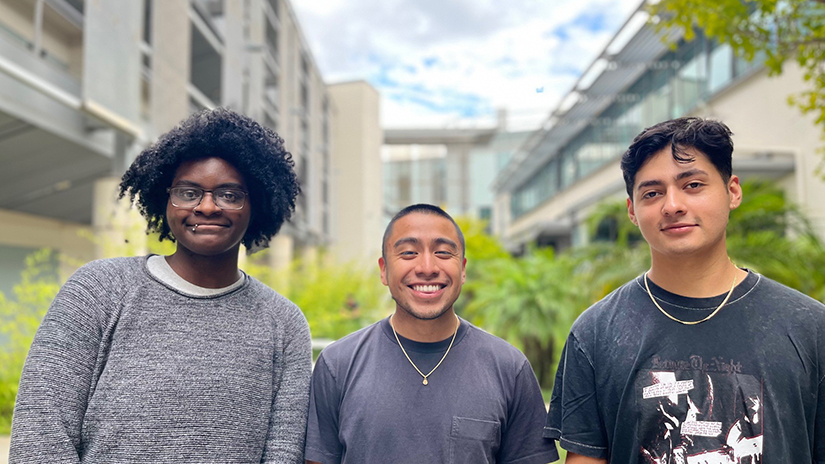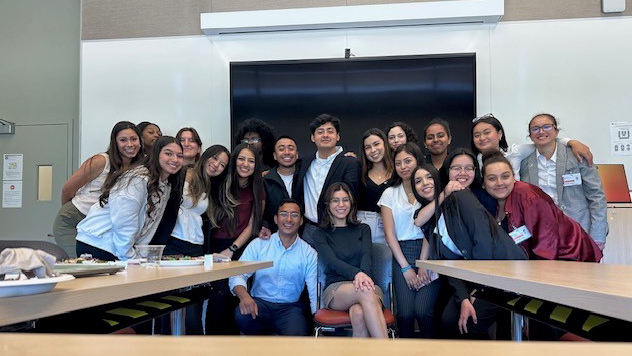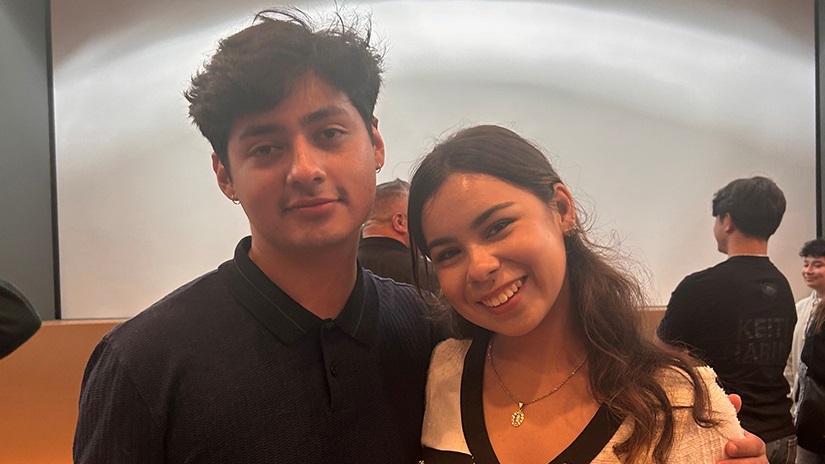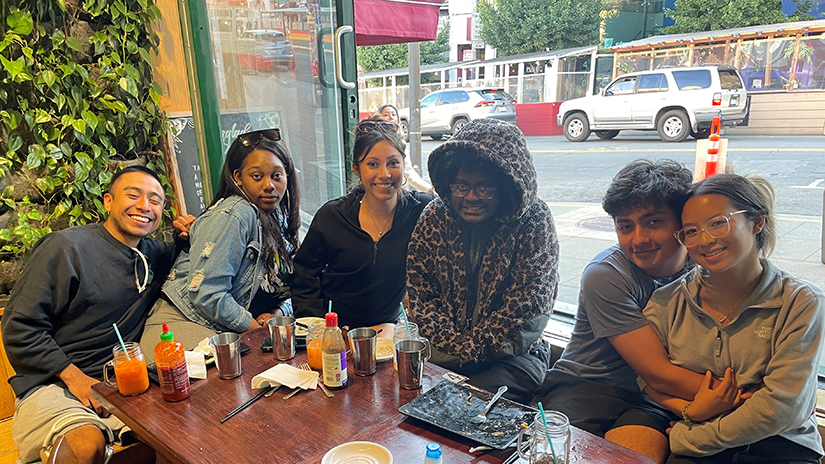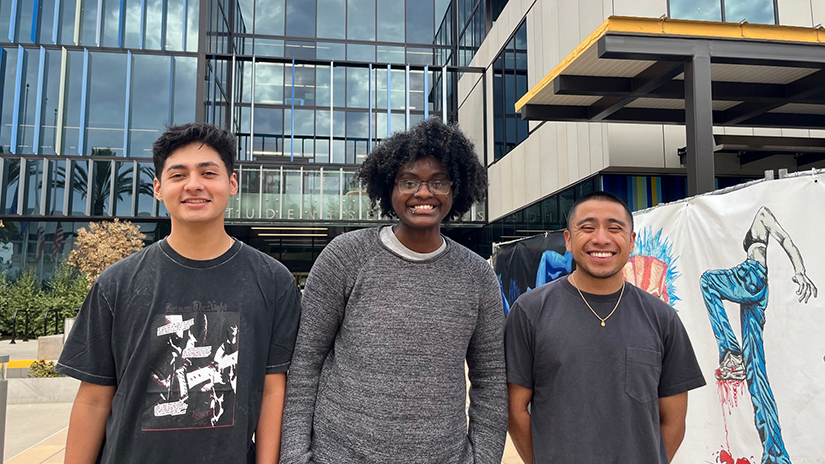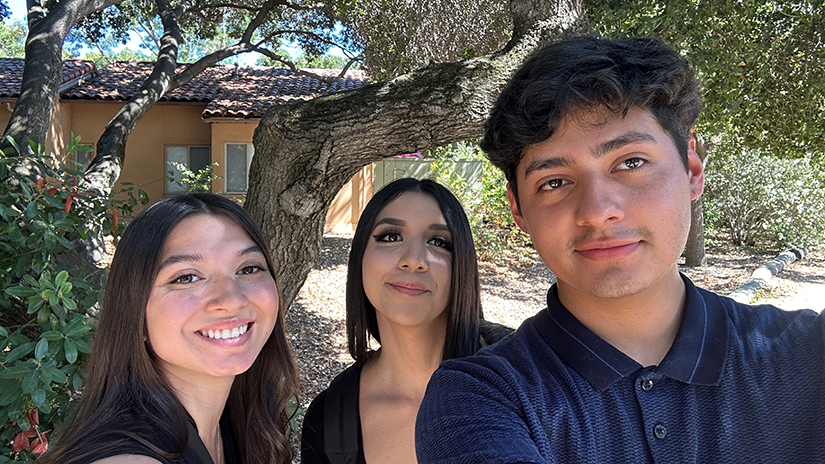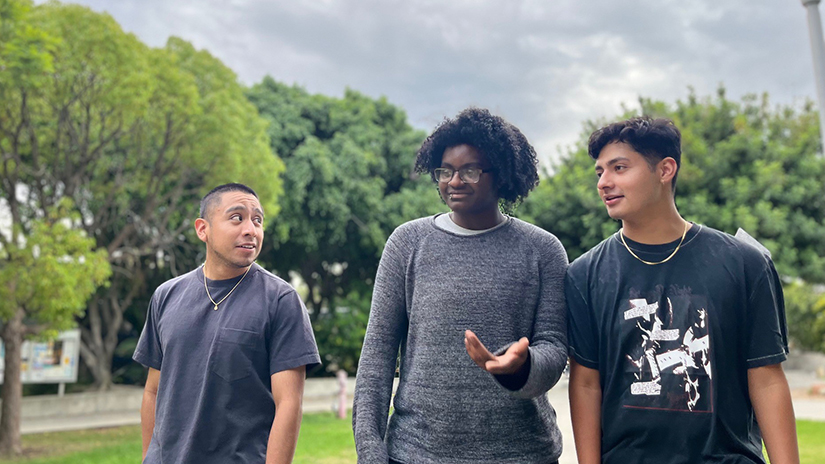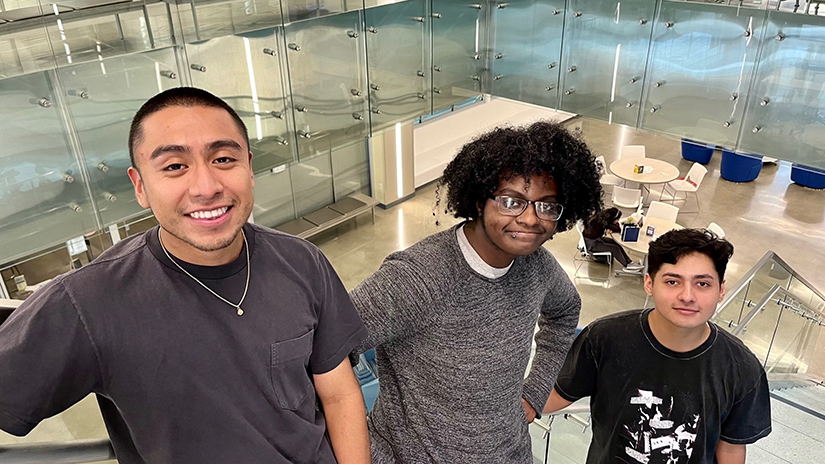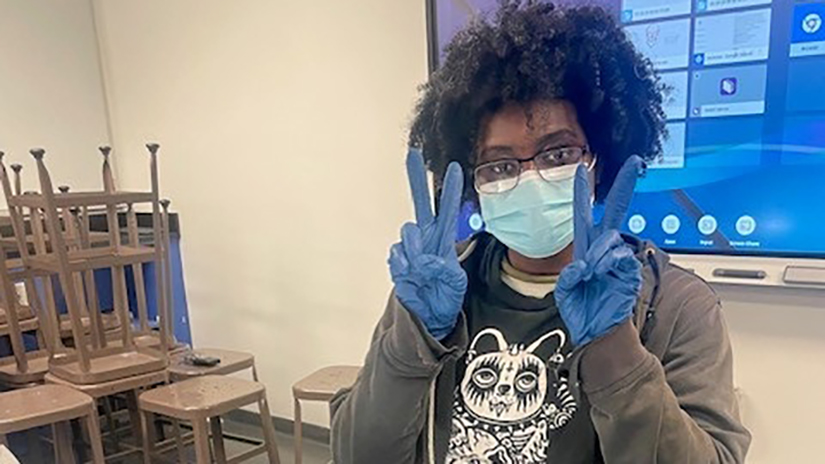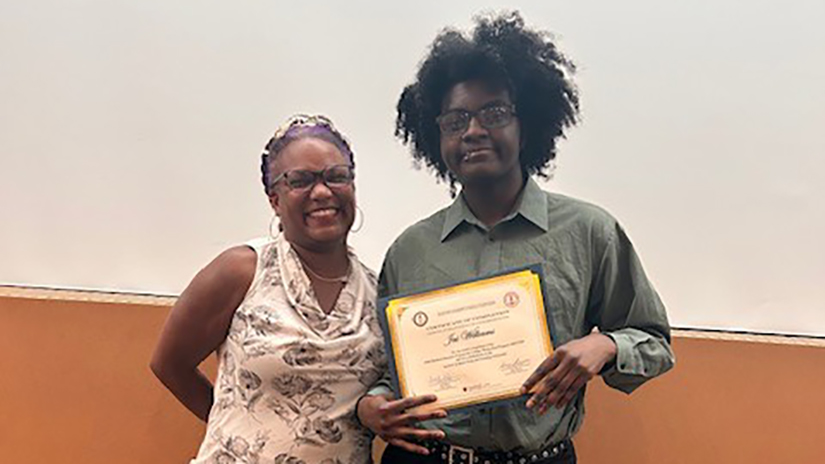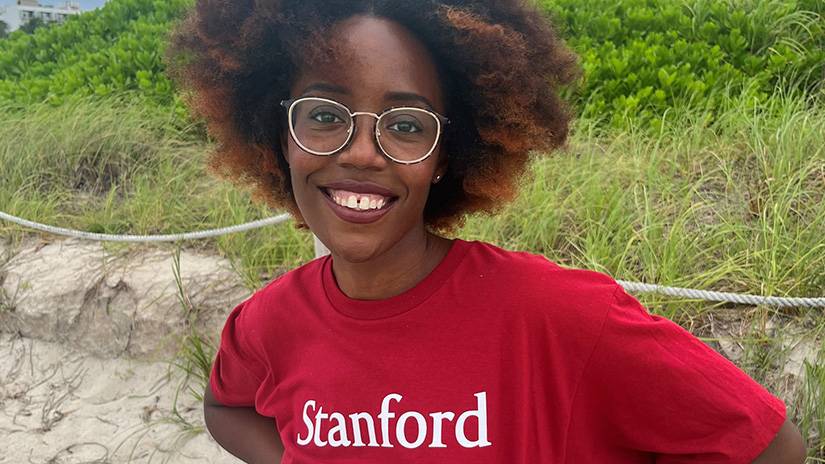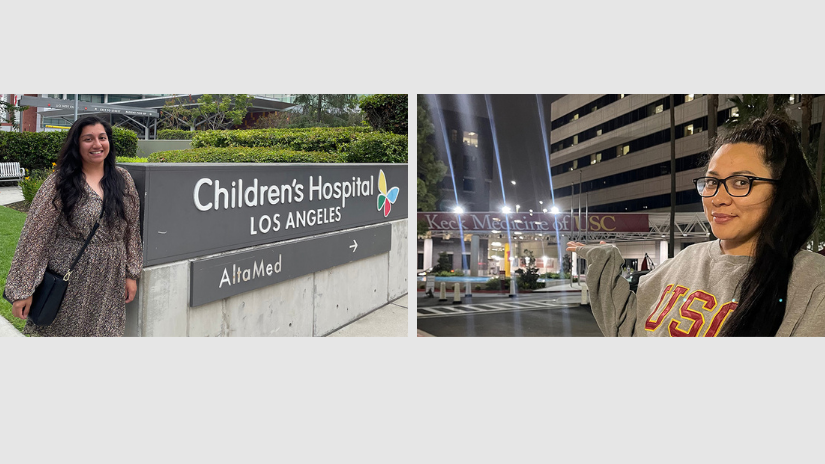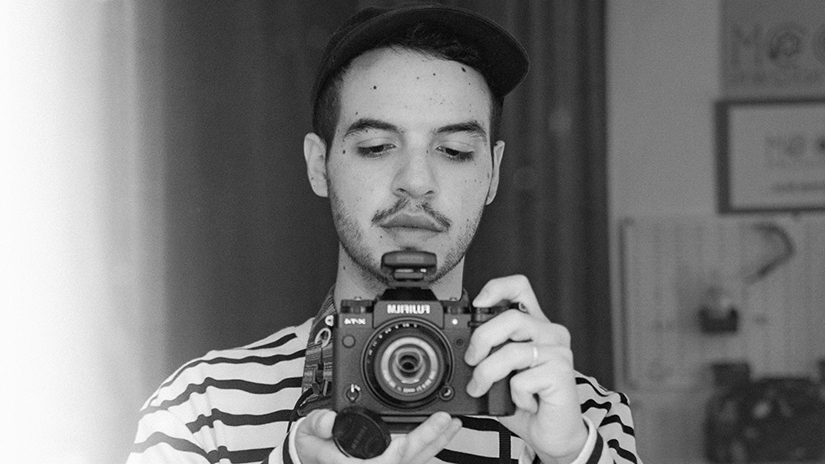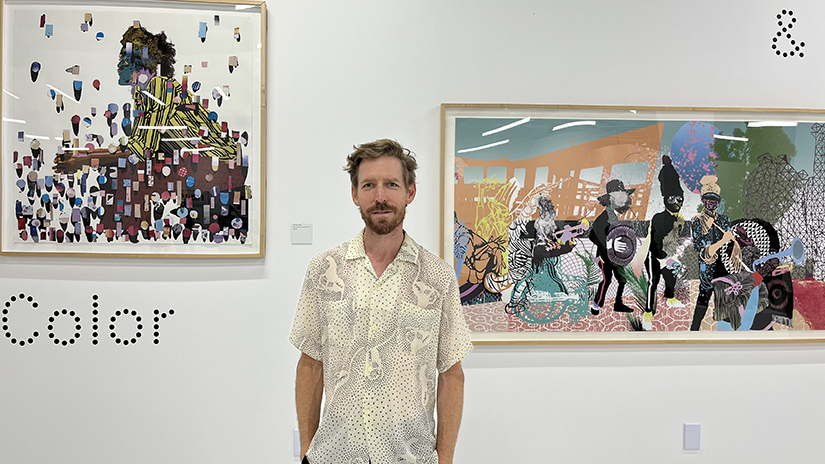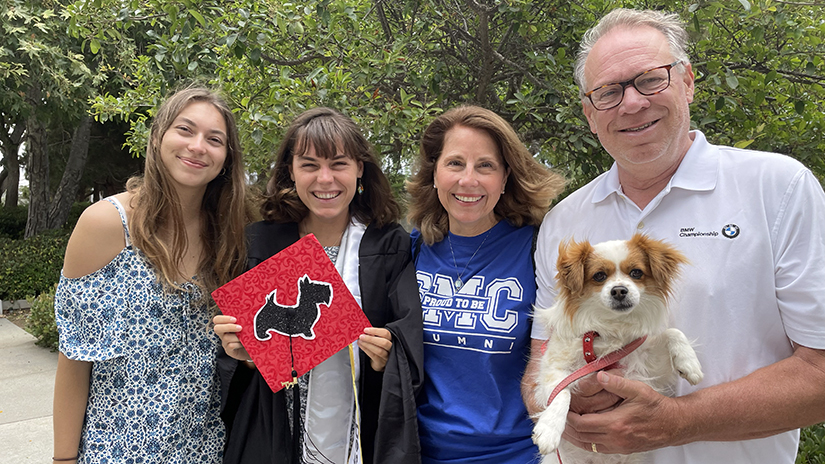
Summer—a time to catch up on leisurely pursuits (a book on the beach?) or perhaps
get a couple extra college credits or two under your belt, if you’re a Santa Monica College student working towards a goal. Three SMC students—Neuroscience major Candido Lopez, psychology major Jai Williams, and anthropology major Alexis Molina—had an unlikely summer in Palo Alto, shadowing physicians and health professionals, taking part in classes and workshops,
and so much more . . . at Stanford. Yes, that one. Candido, Jai, and Alexis had something in common: they applied to the academically-intensive
Stanford Summer Community College Premedical Program (SSCCPP)—encouraged by SMC counselors—but none of them thought they’d actually get in.
They were among 18 students selected as the 25th cohort of the academically-intensive program at Stanford Medicine, which exclusively targets community college students considering careers as physicians
and other health professionals. The program was intense—it began as a two-week virtual
program that transitioned to an in-residence experience. Perks included housing and
meal plans, plus a small stipend to support their pre-professional development and
offset the no-work requirement. Along with the other participants, Candido Lopez,
Jai Williams, and Alexis Molina engaged in scholarly, social, research, and clinical
sessions six days a week.
It was a busy, packed summer: there were traditional classes, medical school admissions
workshops, science-based classes like human anatomy and molecular cellular biology.
They shadowed physicians and other health professionals. Plus, they engaged in scholarly
research centered around health disparities and presented on research projects undertaken
with their peers (Candido and Alexis are both transferring to UCLA this fall, and Jai plans to transfer next year—to UCLA, UC Berkeley, or UC San Diego).
But it wasn’t all work and no play—as Alexis puts it, “the best part was bonding with
people, establishing connections.”
“It’s Like a Small Town”
All three are city dwellers. Alexis and Candido grew up in LA, Jai moved about but
mostly grew up in the Inland Empire. So being in Palo Alto was “very homey and cozy,” says Candido.
“The best part was the genuine friendships we built over there . . . people who come
from different communities,” Alexis says. The experience of meeting their fellow scholars
was also affirming: they had so much in common. “It was just crazy to see how we all
had the same upbringing, in some way [or the other].”
Candido added that it felt like a family. And getting the chance to leave LA and experienced
a place so “spread out . . . secluded” was tremendous fun.
For Jai Williams, the experience was eye-opening in another way. His peers presented
on research projects on things he’d “never thought about before.” One such project
took a deep dive into health disparities experienced by farm workers. It left a deep
impression on him, all the things that people from diverse communities have to endure.
A Second Chance
Certain common themes emerge when students are asked why they chose SMC. Location
(you can’t beat “less than two miles from the beach”, can you?). The three-decade-plus
record as California’s No.1 transfer college to the University of California. The dedicated, above-and-beyond culture of student support. And, very often, this:
SMC represents a second chance—it might not have been student’s top choice, but ended
up being the best possible choice they might have made.
Alexis and Candido both chose to attend SMC because they hadn’t done particularly
well in high school. The college was “a second chance,” says Alexis.
“SMC was never something I had thought about—the reason I even attended SMC is because
my sister was going there, she’s a year older,” he says, “but [the college] came at
a perfect time. It gave me a second chance to prove to myself that I am smart.” To
be specific, the college’s supportive culture—in particular, programs like EOPS, the Latino Center/Adelante Program, and the Men of Color Action Network—helped Alexis realize that he was capable of achieving whatever he wanted.
Candido’s story is similar. There were a lot of things going on in his life that kept
him from doing well in high school. He applied to a four-year school but didn’t get
in. His family encouraged him to attend community college, to try and find his way.
The nearest one happened to be SMC, and a lot of his high school classmates went there,
so it was a natural choice. Once he got to the college, Candido found a community,
one that affirmed he wasn’t alone in his journey. “I was like, ‘If they’re here, and
I’m here . . . we can all make it.’”
An older sister—with whom he is especially close—has been especially instrumental
in Candido’s life. “Without her,” he says, “I honestly don’t think I would have pursued
anything higher than an associate’s degree. She told me, “I know you can do it. You’re
smart, and I will be here with you.’
In addition to the programs Alexis named, Candido attributes his success to the SMC Scholars Program and the SMC Career Services Center. He stuck with the counselors who helped him the most, and used all the college resources
available. Eventually, he realized, as he puts it, “Hey, I’m actually good at science,
so I might as well do something in science!” If it wasn’t for those he guided him
at the college, Candido says, “I would not have made it to where I am right now.”
Jai moved to Los Angeles to attend Pasadena City College. But he kept seeing the ads for SMC on city buses. It seemed like “an interesting
school”, plus there was the draw of the location—“I really loved Santa Monica.” And once he began attending the college, Jai was genuinely surprised by the number
of resources, how supportive and hands-on both professors and counselors were. Beyond
the classroom, he also found support with like-minded peers, as a member of the SMC Pre-Health Club. Jai joined the SMC’s Scholars Program—a distinctive academic community which prepares freshman students, first-generation
college students, students from underserved schools and communities, and non-traditional
students for transfer to the colleges and universities of their choice (Through special
transfer agreements with top four-year colleges and universities, Scholars students
get priority consideration for admissions to four-year institutions including The UCLA College, formerly College of Letters and Science, Transfer Alliance Program; UC Irvine; Loyola Marymount University; Pomona College; and Yale University; to name a few.
When the Scholars Program shared the email about the opportunity at Stanford, Jai
thought, “I probably won’t get into this, but it won’t hurt to sign up.” He was “really
surprised” when he got in. (Alexis and Candido had the same reaction: disbelief, excitement,
surprise.).
A Significant Summer
Their experience at Stanford over the summer was “significant,” Candido says. “I got
to live on campus, and I learned that though we come from different areas and backgrounds,
we all share the same motivation,” he adds. “It validated my reason for being here.
I got to meet the medical students and residents . . . I made connections with a lot
of them. The majority came from similar backgrounds as us. So I think, I, too, can
pursue and eventually complete [the premed pathway].”
Both of them have deep personal reasons for wanting to pursue a career in the medical
field. Many members of Candido’s family would purposely avoid getting healthcare because
“there were a lot of repercussions, specifically [financial].” One of them ended up
getting a late diagnosis and ended up passing away. In his second year at SMC, Alexis
was diagnosed with cancer and he had to deal with insurance issues that delayed the
kind of care he needed. Both of them want to change the system—both of them want to
“alleviate the stress our communities—communities of color—go through,” as Alexis
puts it.
Alexis and Candido returned from Palo Alto with a stronger sense of the specialties
and paths they want to pursue: Alexis is still deciding between emergency medicine
and surgical oncology (before this summer, he hadn’t considered emergency medicine
as a potential path). Candido hopes to pursue either neurology or orthopedics because
in talking to the medical students, he found these two fields most interesting.
For Jai, it was an SMC professor who opened a door for him. “In high school, I struggled
a lot with my mental health,” he says, “and I was in this Psychology 1 class with
Professor Bernadette O’Leary . . . her class was always so interesting. I just loved learning about mental health
and all the social [aspects] of psychology.” He thinks—rightly so—that mental health
is as important as physical health, and hopes to help people as a psychiatrist.
Jai juggles work and school. On the day of the interview with SMC in Focus, he’d just returned from a work interview at a coffee shop. Reflecting on his journey,
he recalls a high school teacher who opened his eyes to what a “growth mindset” was
(versus a “fixed mindset”): meaning that you believe your innate intelligence and
talents can be developed over time. “I thought I was stupid, but it wasn’t true,”
Jai says. “I realized, if I just put in the work, I can do it. And my grades started
going up.”
When asked what they want out of their futures, Jai says: “I want to be happy and
successful.” Candido adds: “I come from a challenged neighborhood . . . stability
is one of the biggest things. I want to be able to help my family, my community.”
“As long as I made a small impact on someone’s life, and made things better,” Alexis
says, “that is the one thing that will fulfill me in life.”
* * *
For more information on Stanford Medicine’s Office of Diversity in Medical Education—which runs the Stanford Summer Community College Premedical Program (SSCCPP)—and its mission, visit med.stanford.edu/odme.




